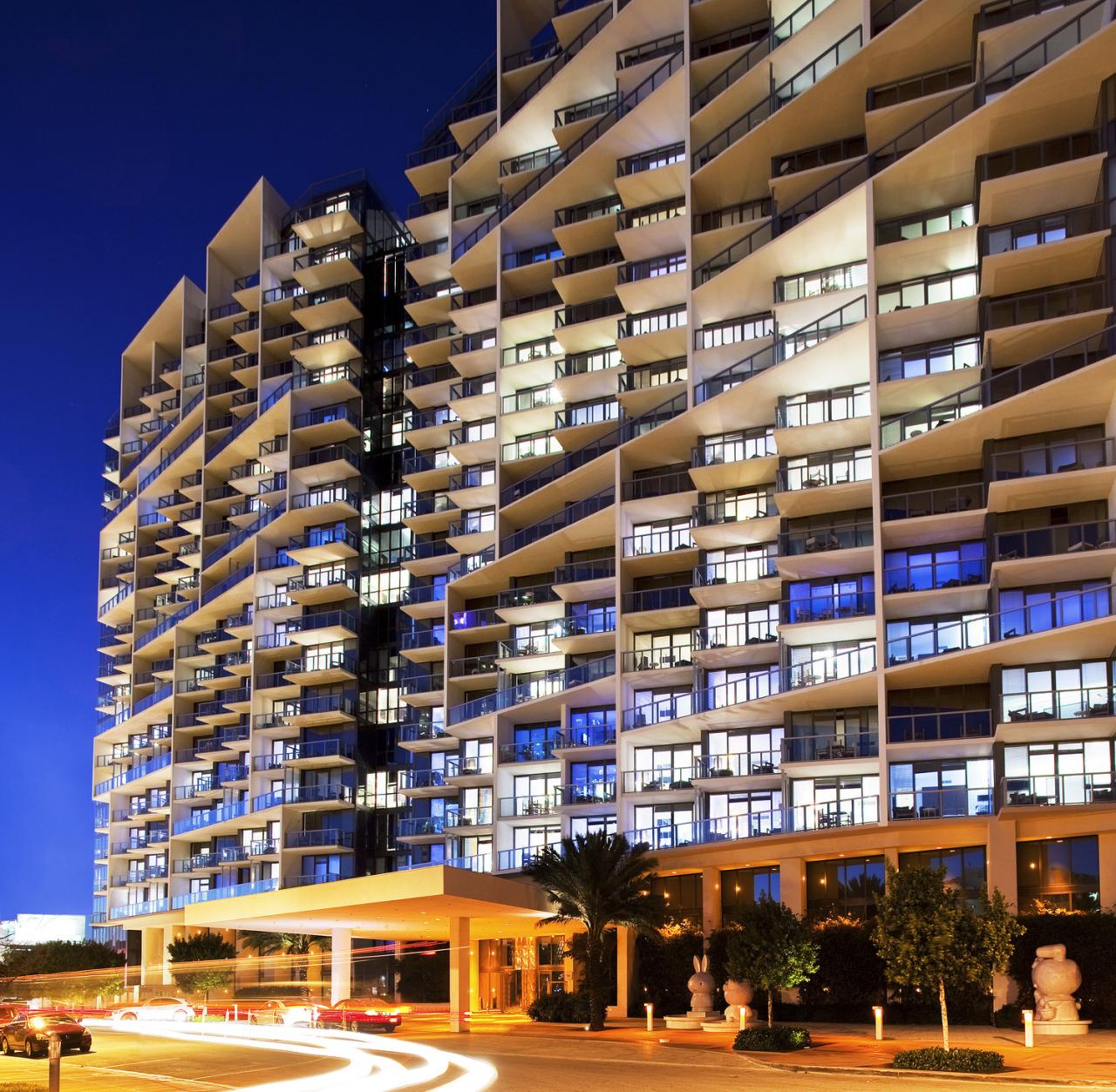Starwood Hotels has emerged as a trailblazer in the hospitality industry, captivating travelers with its rich history and commitment to excellence. Founded with a vision to redefine luxury and comfort, Starwood has grown exponentially, boasting an impressive array of properties spread across the globe. Each location not only reflects the brand’s hallmark of quality but also provides a unique experience that sets it apart from other hotel chains.
With various brands under its umbrella, Starwood caters to a diverse clientele, offering tailored amenities and services to meet the needs of every traveler. From upscale accommodations to budget-friendly options, Starwood Hotels has something for everyone, solidifying its reputation as a go-to choice for those seeking memorable stays.
Overview of Starwood Hotels

Starwood Hotels has established itself as a formidable player in the global hospitality industry since its inception. Founded in 1960 as a hotel management company, it evolved into a leader in the luxury hotel sector, eventually becoming part of Marriott International in 2016. This rich history underscores its growth trajectory and the innovative strategies employed to stay relevant and competitive.
The unique selling propositions of Starwood Hotels set it apart from other chains, focusing on niche markets tailored to diverse traveller needs. Its loyalty programme, Starwood Preferred Guest (SPG), was known for its generous rewards and member-centric offerings, fostering a strong community around the brand. Furthermore, Starwood has cultivated a portfolio that exemplifies luxury and distinctiveness, with hotels that vary from opulent resorts to chic boutique properties.
Historical Development
Starwood’s journey began with the founding of its first property, the St. Regis Hotel in New York City, which opened its doors in 1904. The company grew significantly over the decades, particularly after entering the hotel management sector in the 1960s. By acquiring various prestigious hotels and chains throughout the 1990s and early 2000s, including Westin, Sheraton, and W Hotels, Starwood expanded its global footprint and diversified its offerings.
The evolution of its brand was marked by strategic mergers and acquisitions that allowed it to tap into new markets and customer bases. For instance, the establishment of The Luxury Collection and the launch of the W Hotels brand in 1998 were pivotal moves that catered to both high-end travellers and a younger, trendier demographic.
Starwood’s commitment to sustainability and community engagement has also been a defining element of its brand philosophy, resonating with modern consumers who value corporate responsibility. The introduction of programmes aimed at reducing carbon footprints and supporting local communities has helped enhance its reputation in the hospitality sector.
Market Position and Properties
Starwood Hotels operates a vast array of properties worldwide, boasting over 1,300 locations in more than 100 countries. The brand’s offerings encompass a wide variety of styles, ensuring that it can appeal to different types of guests, from the luxury traveller to the budget-conscious visitor. Examples of their property types include:
- Luxury Hotels: The St. Regis, Luxury Collection Hotels
- Upscale Hotels: Sheraton, Westin
- Chic Boutique: W Hotels, Aloft Hotels
- Budget Options: Four Points by Sheraton
This extensive portfolio not only reflects the brand’s ability to cater to diverse clientele but also highlights its presence in key markets across the globe. The strategic choice of locations, often in vibrant urban centres or idyllic resort destinations, enhances its appeal to both business and leisure travellers.
“Starwood Hotels has significantly influenced the hospitality landscape, setting benchmarks for luxury, innovation, and customer loyalty.”
Through its commitment to quality and service excellence, Starwood continues to be a notable force in the industry, with an unwavering focus on enhancing guest experiences across its diverse range of properties.
Starwood Hotels Brands and Properties

Starwood Hotels, a prestigious name in the hospitality industry, boasts a diverse array of brands catering to various market segments. Each brand under its umbrella is meticulously designed to appeal to distinct traveller preferences, ensuring that every guest finds an appropriate accommodation that aligns with their needs. This discussion will delve into the significant brands of Starwood Hotels and their unique offerings.
The following section provides a comprehensive overview of the different hotel brands within the Starwood Hotels portfolio, alongside a comparison of their target markets and the amenities and services they provide. This information is pivotal in understanding how Starwood Hotels effectively meets the diverse needs of global travellers.
Starwood Hotels Major Brands
Starwood Hotels encompasses several major brands, each tailored to specific clientele. Below is a summary of these brands, along with their primary target markets and a selection of key amenities.
| Brand | Target Market | Amenities & Services |
|---|---|---|
| St. Regis | Luxury Travellers | Butler service, fine dining, spa, and exclusive experiences |
| The Luxury Collection | Affluent Explorers | Unique local experiences, premium accommodations, and personalised service |
| Sheraton | Business and Leisure | Meeting facilities, fitness centres, and family-friendly services |
| Westin | Health-Conscious Travellers | Heavenly Bed, wellness programmes, and healthy dining options |
| Le Meridien | Cultural Enthusiasts | Art-inspired spaces, creative dining, and local cultural insights |
Each brand functions with a specific identity that resonates with its target audience. For instance, the St. Regis brand is synonymous with luxury and sophistication, offering unparalleled butler service and exquisite dining options, which appeals to discerning travellers seeking a lavish experience. On the contrary, the Sheraton brand serves both business and leisure travellers by providing practical amenities such as extensive meeting facilities and family-friendly services, ensuring a comfortable stay for all.
“Starwood Hotels has successfully positioned its brands to cater to unique customer preferences, creating tailored experiences that enhance guest satisfaction.”
Understanding the differences between these brands allows for greater appreciation of the tailored experiences that Starwood Hotels provides, making it easier for guests to select accommodations that fit their travel needs and style. This strategic diversification within the hotel’s portfolio exemplifies Starwood’s commitment to delivering exceptional hospitality.
Loyalty Programs and Customer Benefits

The Starwood Preferred Guest (SPG) program stands as a hallmark of customer loyalty within the hospitality sector, offering a wealth of perks tailored to enhance the guest experience. The structure of this programme exemplifies a commitment to rewarding frequent visitors, fostering both loyalty and satisfaction among patrons of Starwood Hotels.
The SPG programme encompasses an array of benefits, tailored to meet the diverse needs of its members. By joining, guests can accumulate points with each stay, which can be redeemed for free nights, room upgrades, and exclusive experiences. Additionally, members enjoy flexible redemption options, enabling them to use points for flights and car rentals through partnerships with major airlines and transportation services. The tiers within the programme—Member, Gold, and Platinum—further enhance benefits, offering greater rewards as one ascends the ranks.
Comparison with Other Major Hotel Loyalty Programs
Starwood’s SPG programme can be compared against other prominent loyalty programmes such as Marriott Bonvoy, Hilton Honors, and World of Hyatt. Each of these programmes offers distinctive advantages, yet the SPG programme maintains certain competitive edges.
– Point Accumulation and Redemption: Members of the SPG programme earn points at a higher rate compared to many competitors. For instance, guests earn 2 points per US dollar spent at hotels, with opportunities for bonus points through promotions and partners.
– Elite Status Benefits: The tiered system of SPG includes valuable perks such as late checkout, complimentary room upgrades, and access to exclusive lounges, which are comparable to the benefits offered by Hilton’s Gold status or Hyatt’s Globalist tier.
– Partnerships and Experiences: SPG’s collaboration with airlines and travel services allows for a more flexible use of points, enabling members to seamlessly integrate travel rewards into their broader travel plans.
Impact of Loyalty Programs on Customer Retention and Satisfaction
Loyalty programmes like SPG play a critical role in customer retention at Starwood Hotels. By investing in customer loyalty, Starwood not only enhances guest satisfaction but also secures a steady stream of repeat business.
The impact of these programmes is evident through increased customer engagement and satisfaction ratings. A significant percentage of hotel guests—upwards of 80%—indicate that rewards programmes influence their choice of hotel chain. Furthermore, Starwood has reported that loyal members tend to spend more per stay, reflecting their commitment to the brand.
“Loyalty programmes are not merely about points; they represent a relationship between the brand and the customer.”
In summary, the SPG programme’s emphasis on personalization and high-value rewards correlates directly with enhanced customer loyalty and satisfaction, ensuring that guests feel valued and appreciated during their stays at Starwood Hotels.
Sustainability Practices in Starwood Hotels
Starwood Hotels has long recognised the importance of sustainability, implementing a range of initiatives aimed at reducing their environmental footprint, promoting resource efficiency, and fostering community engagement. Their commitment to sustainability not only enhances the guest experience but also contributes to global efforts in preserving the planet for future generations. Through strategic planning and innovative approaches, Starwood has established itself as a leader in sustainable hospitality.
Sustainability practices within Starwood Hotels encompass a variety of eco-friendly initiatives that collectively aim to mitigate the impacts of tourism and hotel operations on the environment. From energy conservation to waste reduction, these initiatives reflect a holistic approach to sustainability that balances the needs of guests while ensuring the responsible use of resources.
Eco-Friendly Practices in Starwood Properties
A myriad of eco-friendly practices has been adopted across various Starwood properties, showcasing their dedication to sustainability. These practices not only benefit the environment but also enhance the overall guest experience. The following list highlights key initiatives implemented in Starwood Hotels worldwide:
- Energy-efficient lighting and motion sensors to minimise energy consumption.
- Water conservation measures, including low-flow fixtures and greywater recycling systems.
- Sustainable sourcing of food and beverages, prioritising local and organic options.
- Comprehensive recycling programmes to reduce waste sent to landfills.
- Use of eco-friendly cleaning products that are less harmful to the environment.
- Implementation of green building standards in new construction and renovations.
- Community involvement through local environmental initiatives and partnerships.
Starwood’s commitment to sustainability is also exemplified through specific case studies that illustrate the effectiveness of their eco-friendly initiatives.
Case Studies of Successful Sustainability Projects
Two notable case studies within the Starwood Hotels network highlight successful sustainability projects that have garnered recognition for their innovative approaches and impactful results:
1. The Westin New York at Times Square: This hotel has implemented a rooftop garden that not only provides fresh produce for its restaurant but also helps mitigate the urban heat island effect in the city. The garden promotes biodiversity and serves as a green space for both guests and local wildlife.
2. Sheraton Grand Chicago: This property has undertaken significant energy efficiency upgrades, leading to a 30% reduction in energy consumption. By investing in advanced HVAC systems and insulation measures, the hotel not only reduces its carbon footprint but also lowers operational costs, demonstrating that sustainability and profitability can go hand in hand.
In summary, Starwood Hotels exemplifies a robust commitment to sustainability through a comprehensive array of practices and initiatives. The integration of eco-friendly measures not only mitigates environmental impact but also serves to enhance the guest experience, ensuring that sustainability remains at the forefront of their operational ethos.
If one is in search of a splendid retreat, the marriott hotel offers an exquisite blend of comfort and luxury, making it an ideal choice for discerning travellers. Additionally, for those with an American Express card, the exclusive benefits of the american express fine hotels and resorts program provide an unparalleled experience, ensuring every stay is not just memorable but also unique.
When one considers luxury accommodation, the Marriott Hotel invariably comes to mind, renowned for its impeccable service and opulent amenities. Similarly, the American Express Fine Hotels and Resorts programme elevates the experience further, offering exclusive perks that make each stay truly exceptional. Together, these options encapsulate the very essence of refined travel.